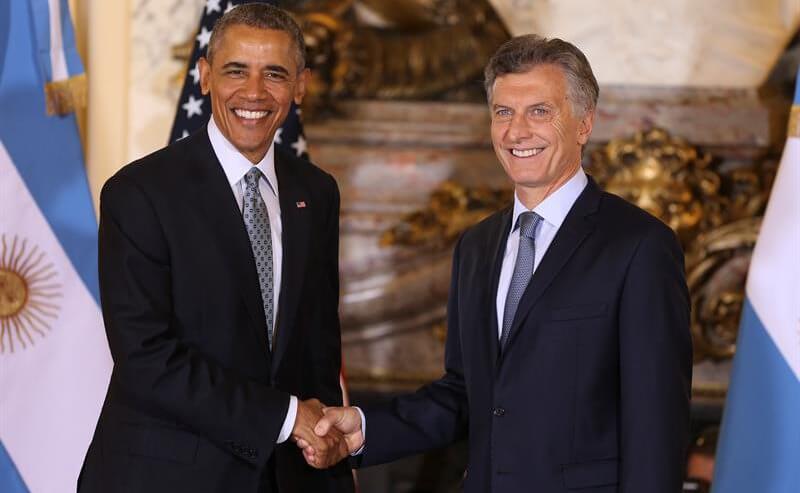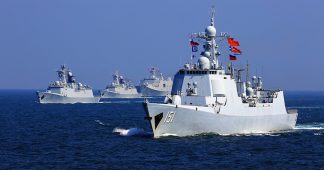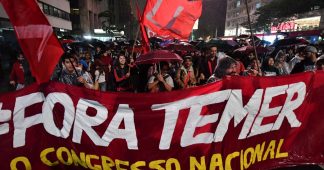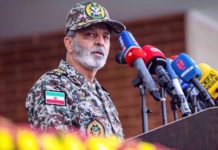By Martín Pastor
Source: Rebelión / October 23, 2017
Recent military exercises in Amazonia shed light on the renewed US presence in Latin America.
The US army will increase its military presence in Latin America’s Amazonia. Under the “Amazon Log” Initiative, passed in 2017 by Michel Temer’s putschist government in Brazil, Operation “United America” will join the armies of the United States, Brazil, Peru and Colombia from November 6 to 13, 2017, in the tri-border city of Tabatinga. This exercise is a sign of a substantial increase in foreign militarization of the region.
The initiative is led by the Logistics Command of the Brazilian Army, and it is inspired in the logistic military exercise carried out by the North Atlantic Treaty Organization (NATO) in Hungary, in 2015, which deployed around 1,700 military. In this Latin American version, the goals, according to the official page of the Brazilian army, are creating a multi-national logistic base to carry out operations of illegal migration control, humanitarian aid, peace operations, actions against drug trafficking and environmental protection. (Source, Source)
However, as Brazilian journal Gauchazh pointed out, teaching a foreign army to combat in national territory should be deemed “high treason”. But the Brazilian Ministry of Defense doesn’t share that appreciation, as it considers that this is an opportunity to unite the armies of the two countries.(Source)
The problem with this exercise is the magnitude and the openness that has been granted to the United States to enter the Latin American jungle. Because one of the risks this entails is that a “temporary” station becomes a permanent one, as happened in Hungary, after the NATO exercises. Brazilian authorities deny this possibility. (Source)
The US’ interest in the region must be measured against the history of the Northern empire. Altruism, protection of nature and combatting drug trafficking used as slogans for their presence in the region echo other interventions in other parts of the world, especially the Middle East, and we know that there, their goals were far from those. Behind the US military action there’s always the goal of taking over resources to achieve their national goals.
In the case of Latin America, the environmental abundance justifies the North American presence. According to the World Bank, the region has a global role in the problem of climate change because it possesses “the largest freshwater reserves in the world”. (Source)
This is bittersweet news for Latin Americans, because several analysts, including former presidential candidate Bernie Sanders, maintain that the wars of the future will be fought over water. Brazil, Colombia and Perú, the three Latin American countries involved in the “United America” Operation, are among the ten countries with the largest water reserves in the world (first, sixth and eighth, respectively).
At the US Office of Net Assessment of the Defense Department, which analyzes the future of the army and its threats, former Director Andrew Marshall commissioned in 2004 a confidential report to Peter Schwartz, CIA advisor and former Director of Planning of the Royal Dutch/Shell group, and to Doug Randall, of the Global Business Network. (Source, Source)
In their final conclusions, the authors of the report argued that climate change and water shortage are a threat to the US’ national security and reasons for future military conflicts. Thirteen years after that report, the US is preparing to add another base on the Amazonas river.
But water is not the only reason why the world superpower is interested in the region. Telma Luzzani, Argentine journalist, explains in her book “Surveilled Territories” (“Territorios Vigilados”) that “the Amazonas contains 95% of the reserves of niobium, which is essential for the steel of spacecrafts and intercontinental missiles, and 96% of the reserves of titanium and tungsten, used in space and military aeronautics; besides being rich in petroleum, gas, uranium, gold and diamonds”.
That’s why the upcoming military exercise is just another piece in this growing pattern of militarization and regional threat. So far in 2017, two other military exercises have been carried out in the Pacific and the Caribbean: Teamwork Southcon Chile and Tradewinds outside the coasts of Venezuela with 18 countries and over 2,500 militaries. (Source, Source)
The freedom of action of this operation proves a resurgence of the US’ presence in the region, which had been reduced during the cycle of progressivist, neo-developmentalist leaders in Latin America. Although the creation of bases in Latin America and the Caribbean has gone through different stages since the post-war, their current characteristics began to emerge in the late 20th century.
In 1999, as part of the Torrijos-Carter agreement, the Howard military base in Panama, which housed the Southern Command, army branch in charge of operations for the region, was dismantled. This led the US Defense Department to reevaluate their defense strategy and foreign politics. Under the banner of the Plan Colombia, the “War on Drugs” and humanitarian operations, two models of military bases were applied in Latin America.
The first one was the Main Operating Base (MOB), a military base with infrastructure and agreements approved by the governments of the target countries: Guantánamo, Cuba; Soto Cano, Honduras, and several in Puerto Rico. Although they are still active, the model was dismissed because it causes rejection among the locals and have high infrastructure and logistics costs.
That led to a second model called Forward Operating Locations (FOL), which have few permanent military personnel but are designed to escalate easily if required. The four bases that have been officially acknowledged began their activities in 1999 and they are: Aruba, Curazao, El Salvador and Manta (which didn’t renew the contract since 2009). Cooperative Security Locations (CSLs) are also small but with no permanent force or contractor personnel. (Source, Source)
As explained by Robert Kaplan, former advisor of the Pentagon from 2009 to 2011, “often the key role in managing a CSL is played by a private contractor. (…) He rents his facilities at the base from the host-country military, and then charges a fee to the U.S. Air Force pilots transiting the base. Officially he is in business for himself, which the host country likes because it can then claim it is not really working with the American military. Of course no one, including the local media, believes this. But the very fact that a relationship with the U.S. armed forces is indirect rather than direct eases tensions”. (Source)
Although there are no official numbers, we currently know of approximately 75 bases, including MOBs, FOLs, CSLs and others with names like the Regional Complex for Disaster Preparation in Peru. The countries with the largest number of bases are Panama (12), Puerto Rico (12), Colombia (9) and Peru (8). (Source)
Additionally, Colombia signed a cooperation agreement with NATO in 2016 to exchange information, strategies and protocols of the Colombian army with members of this organization, which includes the United States. Argentina’s president, Mauricio Macri, announced he will re-enable the installation of permanent military bases in Argentina: one on the Triple Frontier with Paraguay and Brazil and another one in the southernmost province, Ushuaia. In Brazil, Temer’s government has increased the military budget by 36%, months after the passing of the Constitutional Amendment 55, which froze the health and education budget for 20 years. (Source, Source, Source, Source)
These actions legitimate the presence of foreign military at the government level. Besides, with these new approach in Defense will strengthen the military alliances with the US, and this in turn will open the door to a new phase of indoctrination of Latin American forces, with Brazil playing a lead role. (Source)
According to Héctor Luis Saint Pierre, coordinator of International Security, Defense and Strategy of the Brazilian Association of International Relations, “in South America there’s respect for the Brazilian military school. This makes Brazil a strategic partner in the doctrinal training of militaries in the continent. If the US builds a good relation with the Brazilian army, it is easier to disseminate their message to the militaries in the region”. (Source)
This brings back the chilling memory of the School of the Americas, an institution of military and ideological training of the 70s, 80s and 90s. To go back to colonial defense models only means danger and recession for the project of regional integration and peace. (Source)
Even initiatives like Council of South American Defense—which was created by UNASUR in 2008 to implement policies of military cooperation, humanitarian actions and operations for peace industry and defense technology—will be involved in the United Americas Operation as official observer. “This legitimizes the spaces in which the Pentagon participates and dilutes South America’s own spaces”, analyzes Uruguayan journalistRaúl Zibechi. (Source, Source)
With the US undermining national sovereignties, supported by the comeback of “right-wing” leaders and the systematic delegitimization of progressivist projects in the region, the idea of a truly united Latin America, without imperialist impositions, becomes a dream again. Alarmingly, the region continues to be filled of US strategic bases, to control resources, people and military operations. If this isn’t colonialism, then what is it?











